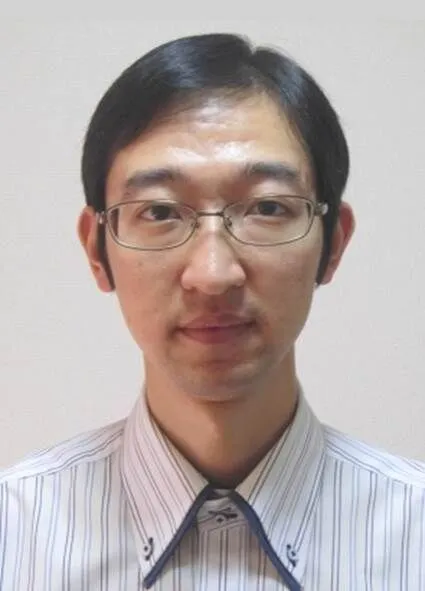CO2绿色转化
2022-04-12欧阳述昕王文中
欧阳述昕, 王文中
CO2绿色转化
欧阳述昕1, 王文中2
(1. 华中师范大学 化学学院, 武汉 430079;2. 中国科学院 上海硅酸盐研究所, 上海 200050)

欧阳述昕, 博士, 华中师范大学教授。天津市海外高层次引进人才, 华中师范大学“桂子学者”特聘教授。长期从事新型光催化、光热催化、电催化能源材料的开发及其反应机理研究。科技部973计划“基于半导体人工光合成的二氧化碳能源化基础研究”主要参与人。
E-mail: oysx@mail.ccnu.edu.cn

王文中, 博士, 中科院上海硅酸盐研究所研究员, 中科院百人计划。主要从事光催化机理、光催化材料的组分设计、合成和微结构调控, 以及光催化在环境净化和太阳燃料方面的应用探索。承担基金委、中科院和上海科委的多项研究项目。
E-mail: wzwang@mail.sic.ac.cn
全球工业化水平的持续提升加速了煤、石油、天然气等化石燃料的消耗, 大量二氧化碳(CO2)被排放进大气, 导致全球变暖和生态失衡, 削减CO2排放、将CO2资源化成为亟需解决的问题。2010年前后, 美国、欧洲、日本相继开启以“人工光合成”为题的国家级科研项目, 投入经费均在1亿美元以上。2011年起, 我国国家自然科学基金委、科技部相继资助了相关项目。2020年9月, 我国政府进一步提出力争在2030年前实现“碳达峰”、2060年前实现“碳中和”的目标。
绿色植物或部分微生物通过“光合作用”将CO2和H2O转化为有机物, 而通过催化剂在光能驱动下将CO2与H2O/H2转化为燃料或化工原料, 正是模拟了自然界的“光合作用”, 被称为“人工光合成”。当然, CO2的转化并不局限于太阳能驱动, 利用非化石燃料产生的电能(如太阳能、风能、水能等)高效率驱动电催化、热催化CO2还原也是可行途径之一。目前, 基础研究的热点是光催化、光热催化以及电催化CO2还原, 这类具有能耗低、环境负荷小、反应效率高等至少一个特点的技术途径均属于“CO2绿色转化”的范畴, 在未来工业化应用中具有较强的竞争力。
近年来, 有关CO2转化的研究突飞猛进, 但是仍面临一些关键性问题亟待解决。光催化途径利用最为温和的方式(常温、常压)将CO2转化为燃料或者化工原料, 但是在反应效率和稳定性等方面还面临着巨大挑战。光热催化途径于2014年被报道之后, 引起了广泛关注, 它利用金属纳米粒子或窄带隙半导体材料进行光能到热能的转换进而驱动热催化反应。相比光催化, 光热催化CO2还原的效率和稳定性得到显著提升, 但是需要消耗氢气(H2)提供氢源, 应用中会造成生产成本上升。相比前两种方式, 电催化CO2还原也比较温和, 其能量利用效率最高, 但是由于其反应环境为水溶液, CO2还原与质子还原的竞争不可避免, 提升产物的选择性面临瓶颈, 液相或者气相产物的分离在一定程度上会增加生产成本。CO2转化的经济性还需要考虑产物的附加值, 光催化、电催化的产物主要集中在C1产物(主要包括一氧化碳、甲烷、甲醇、甲酸盐等), 也有少数研究报道能够产出乙烷。光热催化途径则较有优势, 以CO2和H2为原料的费托合成可以生成C2~C7产物。可见, 各种技术途径各具优势, 但又面临不同的科学或技术困难, 在未来应用中可能互为补充,在不同应用领域各展所长。
尽管CO2转化的研究取得了长足进步, 但是仍面临较多的挑战。在我国提出“碳达峰”、“碳中和”的目标后不久, 《无机材料学报》编辑部即着手策划“CO2绿色转化”专栏。期待我国更多的科研工作者能够投入这项研究并加强合作, 推动其从基础研究快速步入应用研究, 并最终实现工业应用, 使我国由碳排放大国转变为CO2资源化利用的强国!
Green Conversion of CO2
OUYANG Shuxin1, WANG Wenzhong2
(1. College of Chemistry, Central China Normal University, Wuhan 430079, China; 2. Shanghai Institute of Ceramics, Chinese Academy of Sciences, Shanghai 200050, China)
With the continuous progress of global industrialization, fossil fuels have been over-consumed, which results in a large amount of CO2discharged into the atmosphere and therefore causes negative effects such as global warming and ecological imbalance. Reducing CO2emissions and converting recycled CO2to value added chemicals have become important tasks. Around 2010, led by the United States of America, followed by Europe and Japan, tens of countries started their national scientific research projects entitled “artificial photosynthesis”, with an investment as much as 100 million USDs. Since 2011, China has also funded similar projects by the National Natural Science Foundation of China and the Ministry of Science and Technology. In September of 2020, the Chinese government even put forward the goal of “carbon emission peak” by 2030 and “carbon neutrality” by 2060.
Green plants or microorganisms make organics fromCO2and H2O through “photosynthesis”. The photocatalysts can convert CO2and H2O/H2into fuels or chemicals under light irradiation, which simulates the natural “photosynthesis” and is entitled as “artificial photosynthesis”. Nevertheless, the conversion of CO2is not limited to be driven by solar energy; alternatively, the electricity generated by non-fossil fuels to drive efficient electrocatalytic or thermocatalytic CO2reduction is also a feasible way. At present, the hot spots in basic research are photocatalysis, photothermocatalysis and electrocatalysis for CO2reduction. “Green conversion of CO2” defines the technological approaches with at least one of the features of low energy consumption, low environmental load and high efficiency, which enables them competitive in future industrial applications.
In recent years, the study on CO2conversion has made rapid progresses, but some key problems are still to be solved. Photocatalysis provides the mildest way to convert CO2into fuels or chemicals, which means the lowest cost in the future application, but currently faces great challenge in efficiency and stability. Not until photothermocatalytic CO2reduction was reported in 2014, it has attracted extensive attention.The catalysts realize light-to-thermal conversion and subsequently drive thermocatalysis.Compared with photocatalysis, the efficiency and stability of photothermocatalytic CO2reduction are significantly increased, but the consumptionof H2asfeedstock will result in additional cost.Electrocatalytic CO2reduction is also a mild process, and its energy utilization efficiency is the highest among the three methods. However, due to the reaction environment of aqueous solution, there inevitably occurs the competition of CO2reduction and proton reduction;therefore, the improvement of product selectivity is still faced with a bottleneck. Moreover, the separation of liquid or gas phase products somewhat increases production cost. Importantly, the economy of CO2conversion should take account of the yield of value-added product. The products of photocatalysis and electrocatalysis mainly concentrated in C1 chemicals (mainly including carbon monoxide, methane, methanol, formic acid salt,.), and a few studies reported the production of ethane. However,the photothermocatalysisexhibitssuperior advantage in this aspect; for instance,the Fischer-Tropsch synthesis with CO2and H2as feedstocks to produce C2-C7 products has been reported.Each technological approach has its own advantages but faces different scientific or technical difficulties, which may complement each other and show its strengths in different application fields in the future.
Shortly after China put forward the goal of “carbon emission peak” and “carbon neutrality”, the editorial board oforganizes the special issue on “Green Conversion of CO2”. Although the investigation on CO2conversion has made great progress, but still faces various challenges.Looking forward to thatmore researchers devote to this study to promote it from the basic research to the industrial application,our continuous effort will make our country reverse the disadvantage of terrible carbon emission to the advantage of converting recycled CO2to resources effectively.
1000-324X(2022)01-0001-02
10.15541/jim20211001
